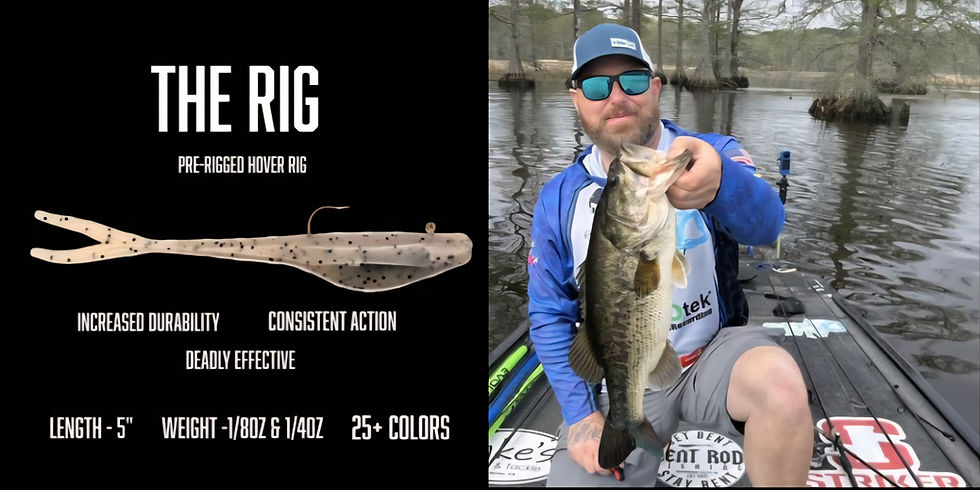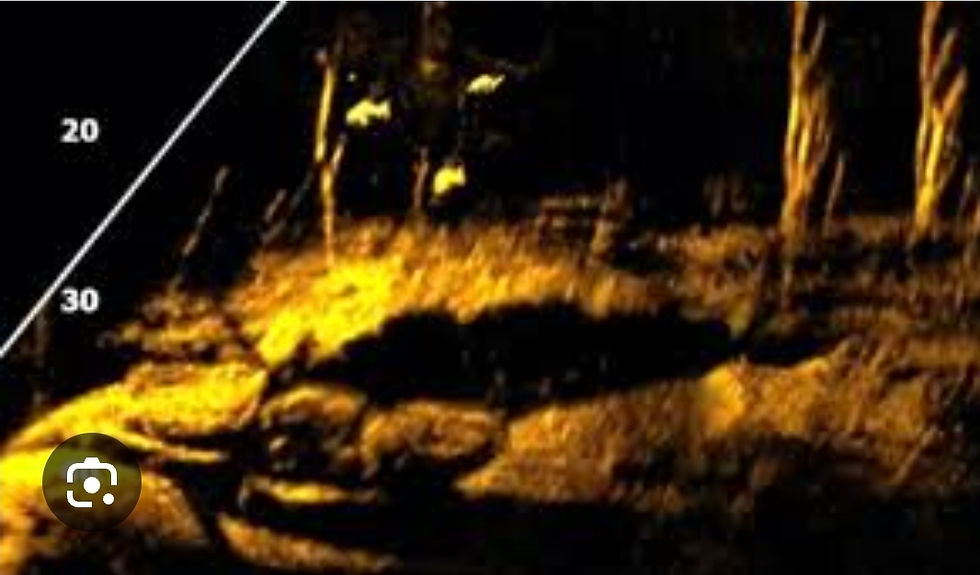Mastering FFS and Hover Rigs
- Daniel Charles
- Aug 14
- 3 min read
The Future is Now: Mastering Hover Rigs with Live Sonar
The game has changed for anglers targeting suspended fish. Forward-facing sonar (FFS) technology has revolutionized how we locate and understand fish behavior, and when paired with hover rigs, it unlocks a level of precision previously unimaginable. Forget blindly casting and hoping; now, we can present baits directly to individual fish with surgical accuracy. Let's dive into the latest techniques for maximizing your success with this cutting-edge approach.

Understanding the Synergy: FFS and Hover Rigs
Forward-facing sonar provides a live, detailed view of what's happening in front of your boat. You can see fish swimming, their depth, and their reaction to your bait. Hover rigging, with its ability to present a bait in a fixed position or with subtle vertical movements, becomes incredibly potent when guided by this real-time information. This combination allows for:
* Precise Bait Placement: No more guessing where to cast. See the fish and put your bait right in its strike zone.
* Real-Time Reaction Monitoring: Observe how fish react to your presentation and adjust accordingly. Are they ignoring it? Try a different retrieve or bait. Are they interested but hesitant? Subtle twitches might trigger a strike.
* Targeting Specific Fish: Identify larger or more active individuals and present your bait specifically to them.

New Techniques for Hover Rigging with FFS
While the fundamental principles of hover rigging remain, FFS has opened doors to refined tactics:
1. The "Ghost Cast": Instead of a traditional cast, use your FFS to locate a target fish. Then, subtly pitch or lower your bait vertically, aiming to intercept its path without making a significant splash or disturbance. This is especially effective for spooky fish in clear water.
2. The "Subtle Shimmy": Once your bait is near a fish, use slight rod tip movements to impart a subtle quiver or shimmy. Observe the fish's reaction on your sonar. Often, this subtle movement is enough to entice a strike when a static presentation isn't working.
3. Depth Management is Key: FFS allows you to pinpoint the exact depth at which fish are holding. Use adjustable floats or weights on your hover rig to maintain your bait precisely at that level. Small adjustments based on fish movement observed on your sonar can make a huge difference.
4. Reading Fish Behavior: Pay close attention to how fish react to your bait on the sonar. Are they aggressively charging? Hesitantly approaching? Ignoring it completely? This real-time feedback is invaluable for adapting your presentation. For example, a fish that initially ignores the bait but then shows interest with a slight turn might be triggered by a sudden, short twitch.
5. Utilizing Multiple Baits (Where Legal): In some jurisdictions, using multiple rods is permitted. With FFS, you can strategically position multiple hover rigs at different depths or with slightly different presentations around a school of fish, maximizing your chances of a hookup.
6. Mapping and Revisiting: Mark waypoints where you consistently find suspended fish using FFS. Over time, you'll build a mental (and digital) map of productive areas and learn patterns related to time of day, weather, and water conditions.
Gear Considerations
To effectively utilize these techniques, ensure your gear is up to the task:
* Sensitive Rods: A rod with a sensitive tip will allow you to detect subtle bites and impart precise action to your bait.
* Light Line: Using lighter line (within reason for the target species) will reduce visibility and allow for more natural bait movement.
* Adjustable Floats/Weights: Being able to quickly adjust your rig's depth is crucial. Slip floats or easily adjustable weights are highly beneficial.
* High-Quality Forward-Facing Sonar: Invest in a unit with clear imaging and a wide enough beam angle to effectively scan the water column.
The Learning Curve
Mastering hover rigging with forward-facing sonar takes practice and patience. Don't get discouraged if you don't catch fish every time out. The key is to observe, learn, and adapt. The more time you spend on the water utilizing these techniques, the more intuitive it will become.
Conclusion
The integration of forward-facing sonar with hover rigs represents a significant leap forward in fishing technology. By embracing these new techniques and focusing on precise bait presentation and real-time observation, anglers can unlock a new level of success targeting suspended fish. The future of fishing is here, and it's incredibly excit
ing!
.png)

Comments